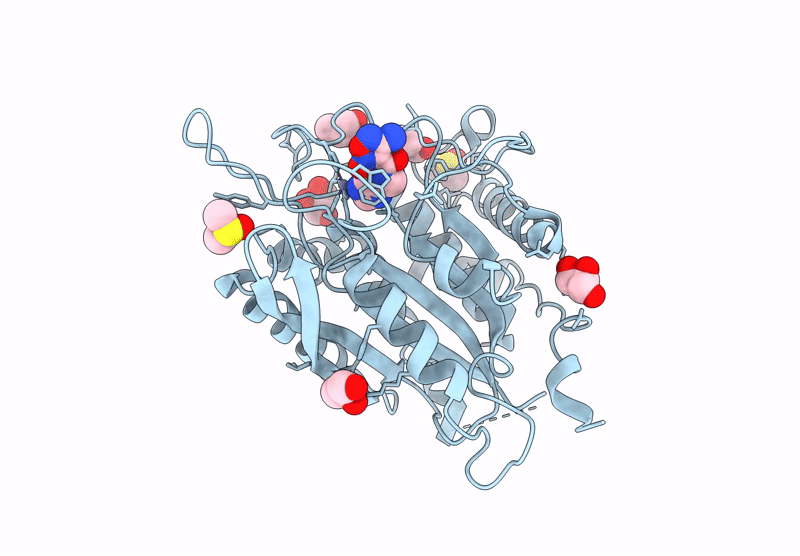
Deposition Date
2024-07-24
Release Date
2025-03-12
Last Version Date
2025-03-19
Entry Detail
PDB ID:
9IVV
Keywords:
Title:
Crystal structure of human secretory glutaminyl cyclase in complex with the inhibitor 3-((2-(1H-imidazol-5-yl)ethyl)carbamoyl)-4-amino-1,2,5-oxadiazole 2-oxide (compound 13)
Biological Source:
Source Organism:
Homo sapiens (Taxon ID: 9606)
Host Organism:
Method Details:
Experimental Method:
Resolution:
2.96 Å
R-Value Free:
0.25
R-Value Work:
0.20
R-Value Observed:
0.21
Space Group:
F 41 3 2


